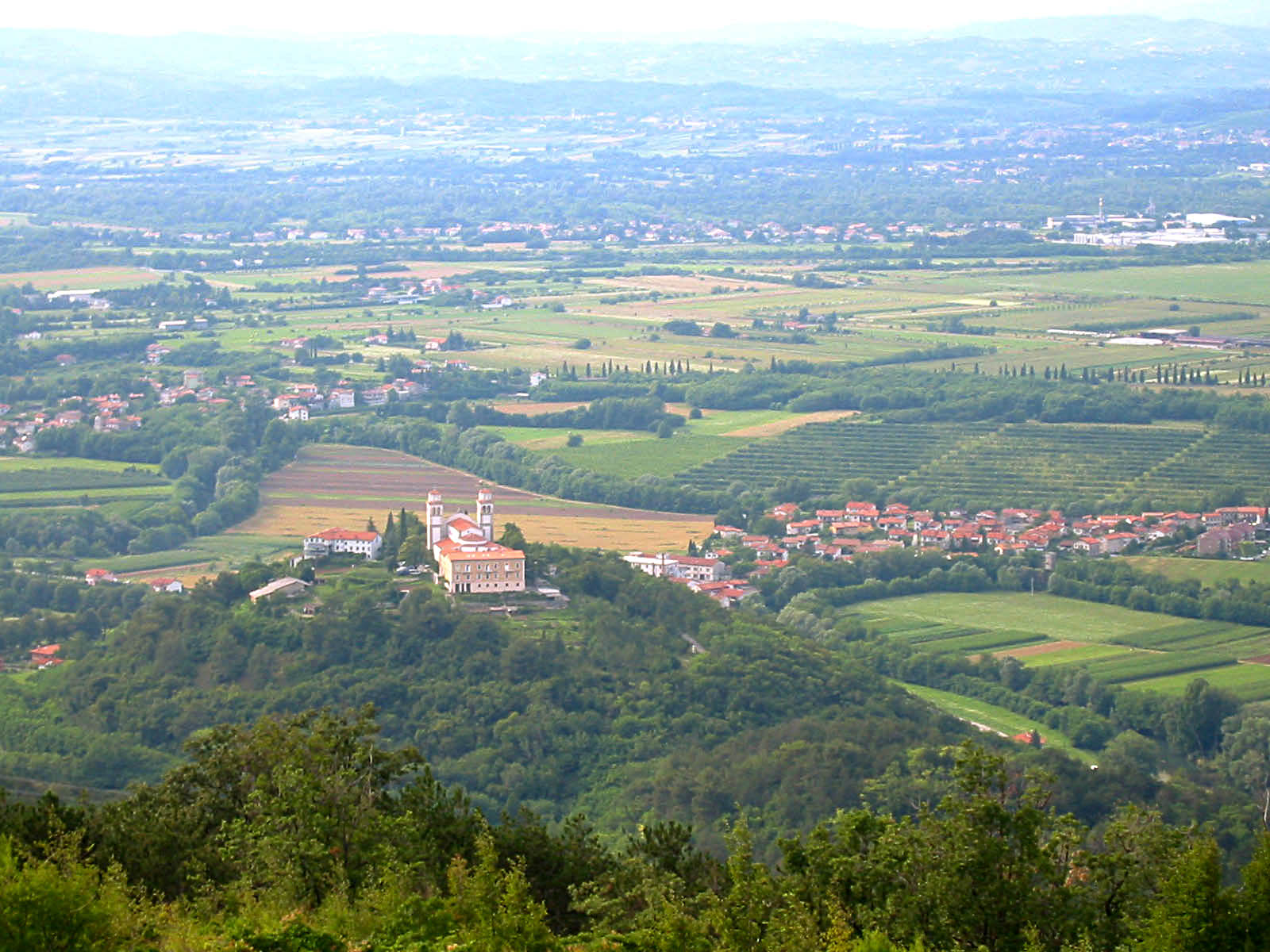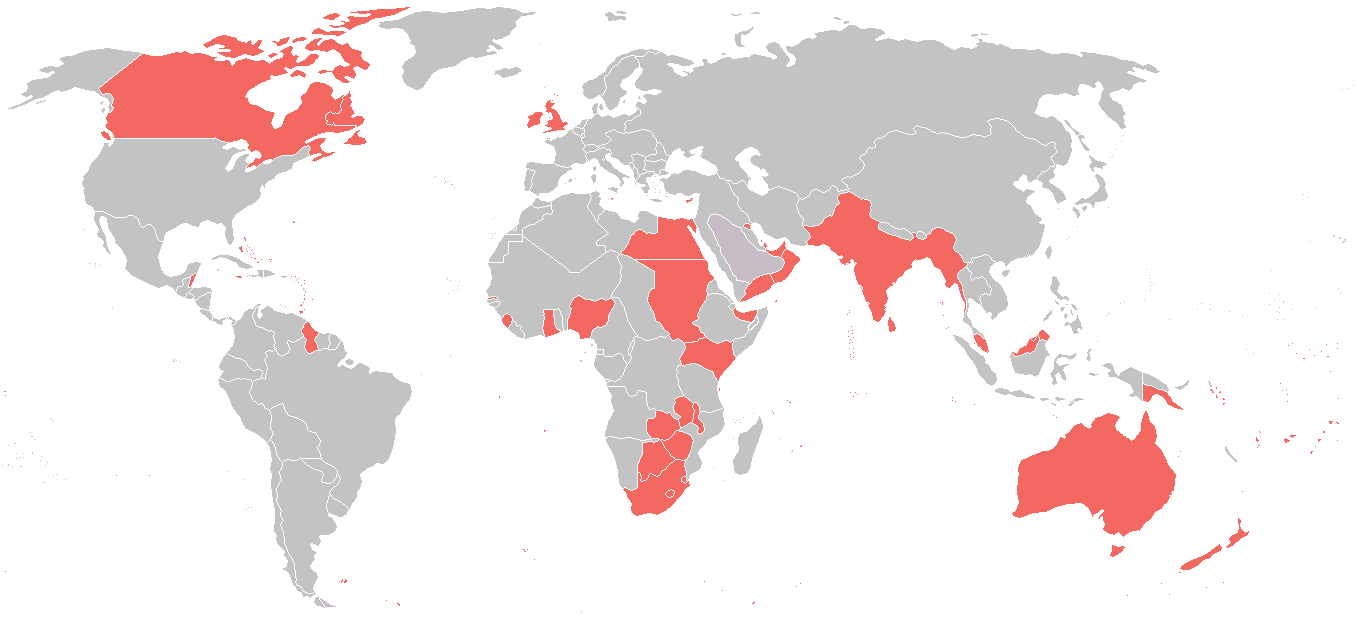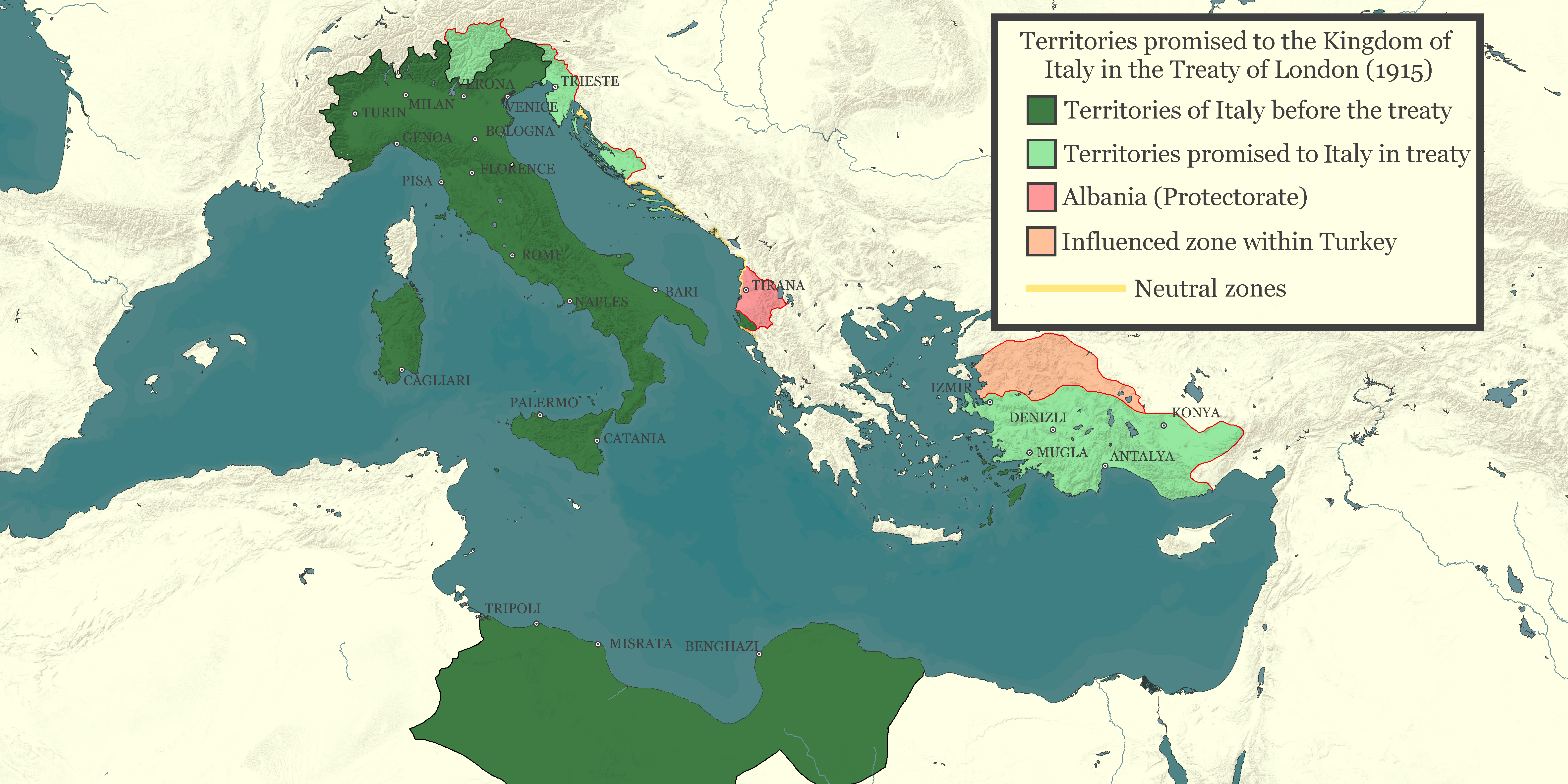|
Isonzo Front
The Battles of the Isonzo (also known as the Isonzo Front by historians, or the Soča Front - ) were a series of twelve battles between the Austro-Hungarian and Italian armies in World War I mostly on the territory of present-day Slovenia, and the remainder in Italy along the Isonzo River on the eastern sector of the Italian Front between June 1915 and November 1917. Italian military plans In April 1915, in the secret Treaty of London, Italy was promised by the Allies some of the territories of Austro-Hungarian Empire which were mainly inhabited by ethnic Slovenes, Croats and Austrian Germans. Italian commander Luigi Cadorna, a staunch proponent of the frontal assault who claimed the Western Front proved the ineffectiveness of machine guns, initially planned breaking onto the Slovenian plateau, taking Ljubljana and threatening Vienna. The area between the northernmost part of the Adriatic Sea and the sources of the Isonzo River thus became the scene of twelve successive b ... [...More Info...] [...Related Items...] OR: [Wikipedia] [Google] [Baidu] |
Soča
Soča (, in Slovene) or Isonzo (, in Italian; other names: ; ; or ') is a long river that flows through western Slovenia () and northeastern Italy (). An Alpine river in character, its source lies in the Trenta Valley in the Julian Alps in northwestern Slovenia, at an elevation of . The river runs past the towns of Bovec, Kobarid, Tolmin, Kanal ob Soči, Nova Gorica (where it is crossed by the Solkan Bridge), and Gorizia, entering the Adriatic Sea close to the town of Monfalcone. It has a nival-pluvial regime in its upper course and pluvial-nival in its lower course. Prior to the First World War, the river ran parallel to the border between Kingdom of Italy and the Austro-Hungarian Empire. During World War I, it was the scene of bitter fighting between the two countries, culminating in the Battle of Caporetto in October and November 1917. Name The river was recorded in antiquity as ''Aesontius'', ''Sontius'', and ''Isontius''. Later attestations include ''supe ... [...More Info...] [...Related Items...] OR: [Wikipedia] [Google] [Baidu] |
Adriatic Sea
The Adriatic Sea () is a body of water separating the Italian Peninsula from the Balkans, Balkan Peninsula. The Adriatic is the northernmost arm of the Mediterranean Sea, extending from the Strait of Otranto (where it connects to the Ionian Sea) to the northwest and the Po Valley. The countries with coasts on the Adriatic are Albania, Bosnia and Herzegovina, Croatia, Italy, Montenegro, and Slovenia. The Adriatic contains more than 1,300 islands, mostly located along its eastern coast. It is divided into three basins, the northern being the shallowest and the southern being the deepest, with a maximum depth of . The prevailing currents flow counterclockwise from the Strait of Otranto. Tidal movements in the Adriatic are slight, although acqua alta, larger amplitudes occur occasionally. The Adriatic's salinity is lower than the Mediterranean's because it collects a third of the fresh water flowing into the Mediterranean, acting as a dilution basin. The surface water temperatures ... [...More Info...] [...Related Items...] OR: [Wikipedia] [Google] [Baidu] |
Vienna
Vienna ( ; ; ) is the capital city, capital, List of largest cities in Austria, most populous city, and one of Federal states of Austria, nine federal states of Austria. It is Austria's primate city, with just over two million inhabitants. Its larger metropolitan area has a population of nearly 2.9 million, representing nearly one-third of the country's population. Vienna is the Culture of Austria, cultural, Economy of Austria, economic, and Politics of Austria, political center of the country, the List of cities in the European Union by population within city limits, fifth-largest city by population in the European Union, and the most-populous of the List of cities and towns on the river Danube, cities on the river Danube. The city lies on the eastern edge of the Vienna Woods (''Wienerwald''), the northeasternmost foothills of the Alps, that separate Vienna from the more western parts of Austria, at the transition to the Pannonian Basin. It sits on the Danube, and is ... [...More Info...] [...Related Items...] OR: [Wikipedia] [Google] [Baidu] |
Ljubljana
{{Infobox settlement , name = Ljubljana , official_name = , settlement_type = Capital city , image_skyline = {{multiple image , border = infobox , perrow = 1/2/2/1 , total_width = 260 , align = center , caption_align = center , image1 = Ljubljana made by Janez Kotar.jpg , caption1 = Ljubljana old town , image2 = Ljubljana Robba fountain (23665322093).jpg , caption2 = Town Hall , image3 = LOpéra-Ballet (Ljubljana) (9408363203).jpg , caption3 = Opera House , image4 = Dragon on the Dragon Bridge in Ljubljana-3906673.jpg , caption4 = Dragon Bridge , image5 = Ljubljana (36048969485).jpg , caption5 = University of Ljubljana , image6 = Le Château de Ljubljana et la place du ... [...More Info...] [...Related Items...] OR: [Wikipedia] [Google] [Baidu] |
Frontal Assault
A frontal assault is a military tactic which involves a direct, full-force attack on the front line of an enemy force, rather than to the flanks or rear of the enemy. It allows for a quick and decisive victory, but at the cost of subjecting the attackers to the maximum defensive power of the enemy; this can make frontal assaults costly even if successful, and often disastrously costly if unsuccessful. It may be used as a last resort when time, terrain, limited command control, or low troop quality do not allow for any battlefield flexibility. The risks of a frontal assault can be mitigated by the use of heavy supporting fire, diversionary attacks, the use of cover (such as smokescreens or the darkness of night), or infiltration tactics. Frontal assaults were common in ancient warfare, where heavy infantry made up the core of armies such as the Greek phalanx and the Roman legion. These dense formations, many ranks deep, would utilize their weight in numbers to press forward and br ... [...More Info...] [...Related Items...] OR: [Wikipedia] [Google] [Baidu] |
Allies Of World War I
The Allies or the Entente (, ) was an international military coalition of countries led by the French Republic, the United Kingdom, the Russian Empire, the United States, the Kingdom of Italy, and the Empire of Japan against the Central Powers of the German Empire, Austria-Hungary, the Ottoman Empire, and the Kingdom of Bulgaria in World War I (1914–1918). By the end of the first decade of the 20th century, the major European powers were divided between the Triple Entente and the Triple Alliance. The Triple Entente was made up of the United Kingdom, France, and Russia. The Triple Alliance was originally composed of Germany, Austria–Hungary, and Italy, but Italy remained neutral in 1914. As the war progressed, each coalition added new members. Japan joined the Entente in 1914 and, despite proclaiming its neutrality at the beginning of the war, Italy also joined the Entente in 1915. The term "Allies" became more widely used than "Entente", although the United Kingdom, Fran ... [...More Info...] [...Related Items...] OR: [Wikipedia] [Google] [Baidu] |
Treaty Of London (1915)
The Treaty of London (; ) or the Pact of London (, ) was a secret agreement concluded on 26 April 1915 by the United Kingdom, France, and Russia on the one part, and Italy on the other, in order to entice the last to enter the Great War on the side of the Triple Entente. The agreement involved promises of Italian territorial expansion against Austria-Hungary, the Ottoman Empire and in Africa where it was promised enlargement of its colonies. The Entente countries hoped to force the Central Powers – particularly Germany and Austria-Hungary – to divert some of their forces away from existing battlefields. The Entente also hoped that Romania and Bulgaria would be encouraged to join them after Italy did the same. In May 1915, Italy declared war on Austria-Hungary but waited a year before declaring war on Germany, leading France and the UK to resent the delay. At the Paris Peace Conference after the war, the United States of America applied pressure to void the treaty as con ... [...More Info...] [...Related Items...] OR: [Wikipedia] [Google] [Baidu] |






